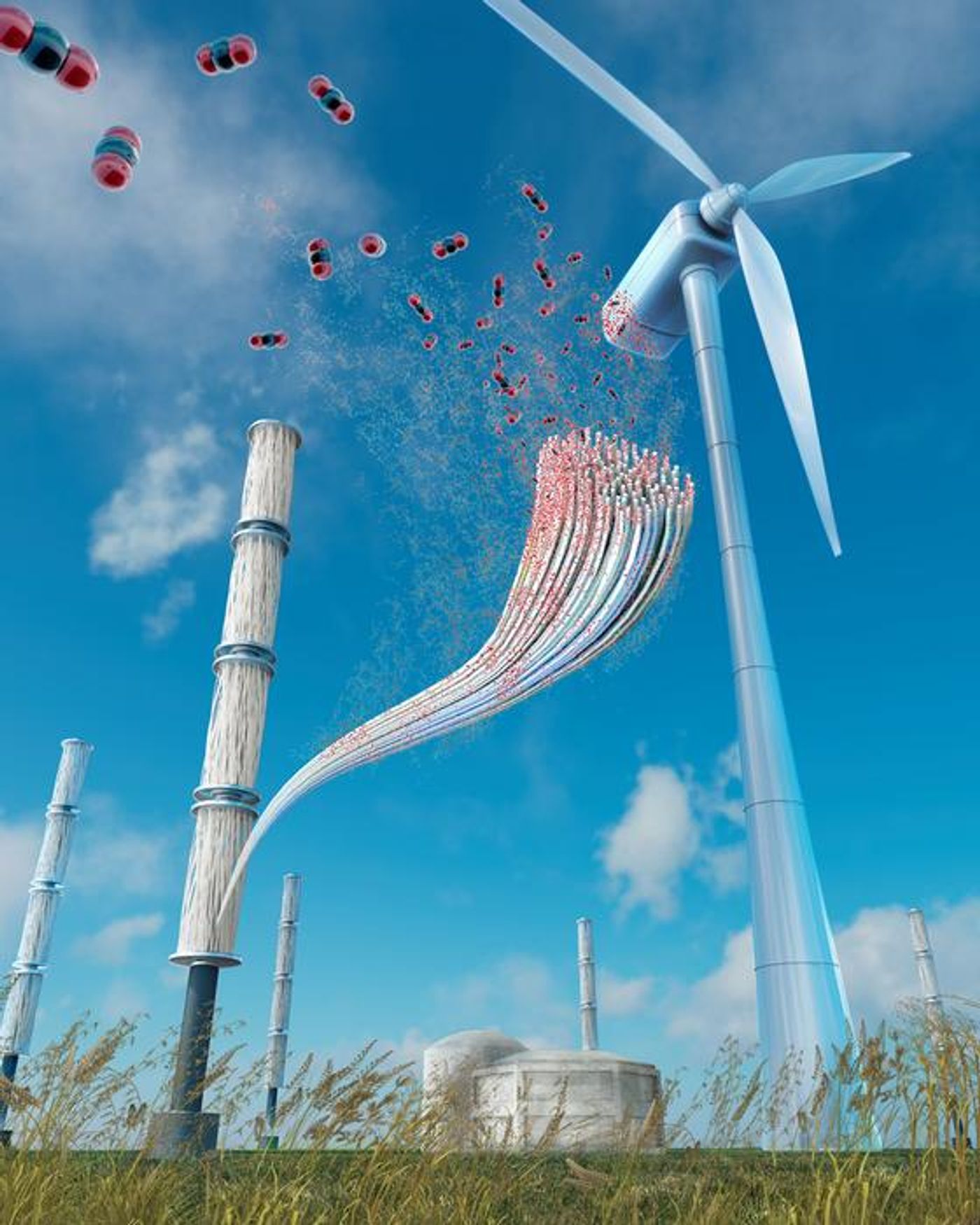Direct Air Capture Technology Could Get Cheaper and Better with Bank-Tube-Inspired Modules
A recent study published in Joule examines how bank-tube-inspired modules could help improve direct air capture (DAC) technology. The motivation behind this study came from an experience at a bank drive-through by one of the study’s co-authors and holds the potential to help reduce the costs and increase the efficiency of DAC, leading to a reduction in carbon emissions along with reducing the impacts of climate change.
A thermal imaging device displaying heat distribution in sorbent-coated carbon fibers that were used in the study to develop cheaper and more efficient direct air capture technology. (Credit: Candler Hobbs, Georgia Institute of Technology)
“I had to go deposit a check at the bank, and I went through the drive-through. They had the old pneumatic tubes that come down to transport documents,” said Dr. Ryan Lively, who is a Thomas C. DeLoach Professor in Georgia Tech’s School of Chemical and Biomolecular Engineering (ChBE) and a co-author on the study. “There are not many times you have a light bulb moment in your career, but I saw the tubes and I realized, we could put the fibers in something like a bank teller tube canister.
For the study, the team built off previous research into using carbon fiber strands to capture carbon dioxide (CO2). The fibers could then be rapidly heated to release the CO2 while minimizing heat loss, thus increasing the efficiency of the system. However, one obstacle the team was trying to overcome was how to situate the fibers to obtain maximum efficiency.
The team used what they describe in the study as a “roll-to-roll process” on the fibers which resulted in the team being able to capture CO2 from the air at approximately 82 percent purity during underground testing. They also determined through models they could reduce the cost of capturing the CO2 from $300 to $600 per ton that is normally demonstrated with commercial DAC systems, to approximately $160 per ton.
“This work not only conceptualized a new generation of DAC systems but also showed practical operations of our invention to some extent,” said Dr. Won Hee Lee, who is a former postdoctoral scholar in Dr. Lively’s lab and lead author of the study. “We already successfully captured ambient CO2 with our lab-scale module. Now it’s important to scale up the module. Since all the components of our system are commercially available and fabrication is relatively easy, there should be few technical hurdles to making the module in large scale.”
Artist illustration of the direct air capture system designed in this study being used on a wind farm. (Credit: Nicolle Fuller, SayoStudio for Georgia Institute of Technology)
The long-term goal is to have the system be deployed at a wind farm using the renewable energy from the wind turbines, which the team determined would be able to reduce carbon emissions even with using power provided by existing power grids.
Also, while the study was successful in removing CO2 at approximately 82 percent purity, their goal is to achieve 99 percent purity, which would allow the system to be deployed above ground.
What new discoveries will scientists make about DAC technology in the coming years and decades? Only time will tell, and this is why we science!
Sources: International Energy Agency, Joule, Georgia Tech
As always, keep doing science & keep looking up!










